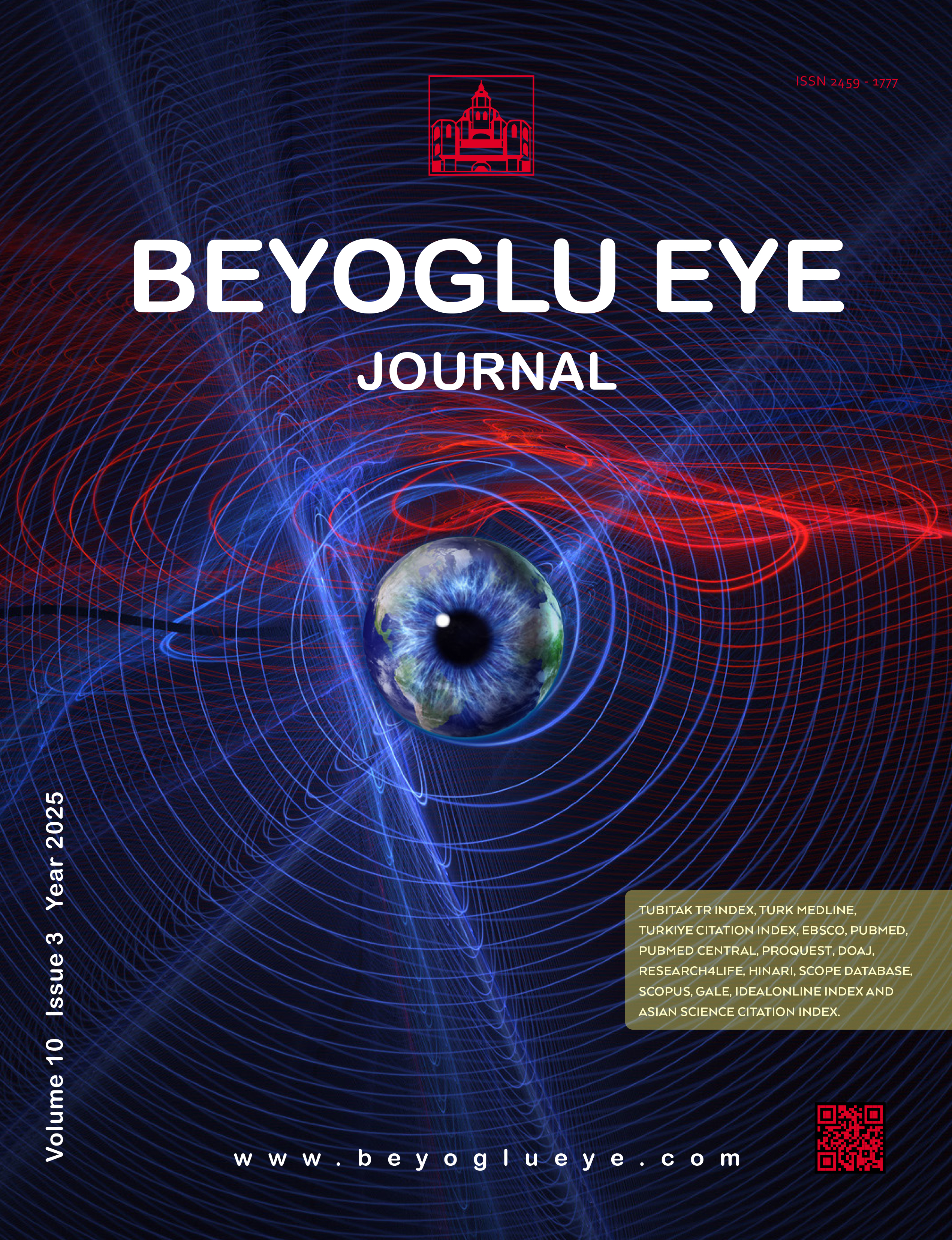
Evaluation of Clinical Findings, Optical Coherence Tomography, Fundus Fluorescein Angiography, and Indocyanine Green Angiography Imaging in Patients with Polypoidal Choroidal Vasculopathy
Ruveyde Garip1, Dilek Yasa2, Abdullah Ozkaya31Department of Ophthalmology, Trakya University, Faculty of Medicine, Edirne, Turkey2Department of Ophthalmology, Beyoglu Eye Training and Research Hospital, Istanbul, Turkey
3Department of Ophthalmology, Sisli Memorial Hospital, Istanbul, Turkey
INTRODUCTION: The aim of this study was to describe clinical findings as well as spectral-domain optical coherence tomography (SD-OCT), fundus fluorescein angiography (FA), and indocyanine green angiography (ICGA) findings of polypoidal choroidal vasculopathy (PCV).
METHODS: This retrospective, observational case series included 144 eyes of 103 patients who were diagnosed with PCV between January 2014 and August 2016. Best corrected visual acuity, 90-diopter lens slit-lamp fundus biomicroscopy examination findings, color fundus photography, SD-OCT, FA, and ICGA findings were evaluated at the time of diagnosis.
RESULTS: Sixty-six patients (93 eyes, 64.1%) were male and 37 (51 eyes, 35.9%) were female. Sixty-two (60.2%) patients had unilateral involvement. The most common SD-OCT finding was retinal pigment epithelial detachment (PED). Red-orange subretinal lesions were seen in 20 eyes (13.9%). There was a single polyp in 21 (14.6%) eyes, and more than 1 polyp in 123 (85.4%) eyes observed with ICGA imaging. The polyps were located in the peripapillary area in 10 (6.9%) eyes, the macular area in 91 (63.2%) eyes, and the extramacular area in 1 (0.7%) eye. A significant branching vascular network was seen in the ICGA images of 112 (77.8%) eyes.
DISCUSSION AND CONCLUSION: In this study, the majority of patients were male, with unilateral macular polyps. A serous PED and an exudative pattern were the most common clinical manifestations. SD-OCT showed specific findings for PCV, but ICGA was the most useful test for diagnosis.
Keywords: Indocyanine green angiography, optical coherence tomography, polyps.
Manuscript Language: English









